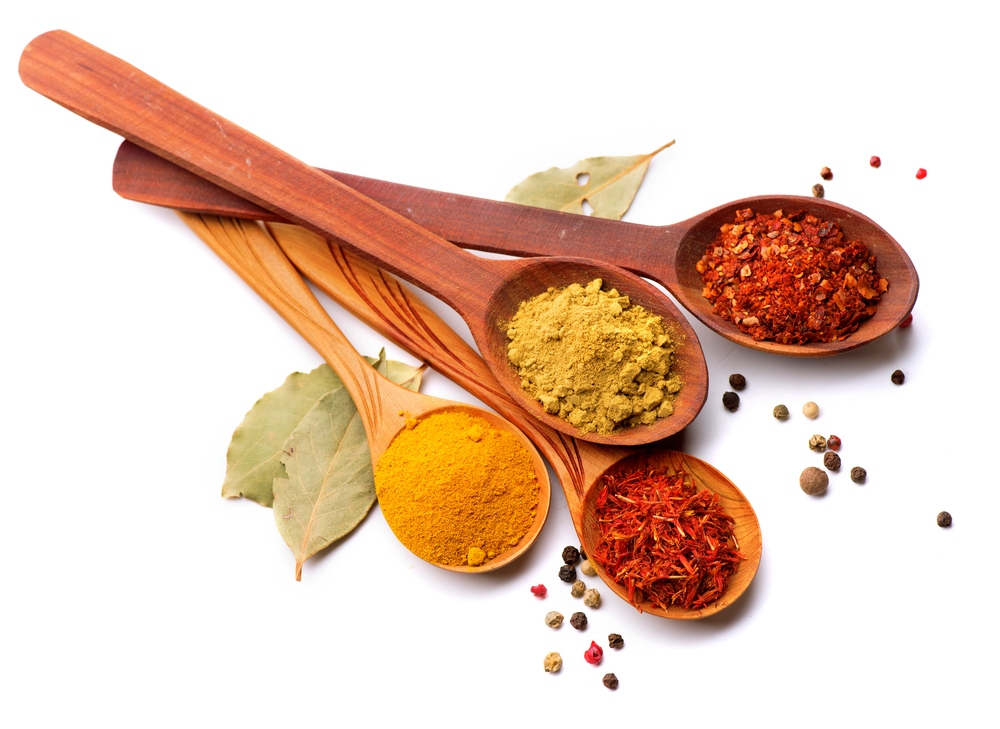That feeling of your airways tightening, the wheeze that makes every breath a conscious effort, the constant clearing of your throat that never quite satisfies – if you’re among the 25 million Americans with asthma or the millions more with respiratory challenges, you know these sensations all too well.
While inhalers and prescriptions have their place, there’s a whole world of natural lung support growing right under our noses. Ancient healing traditions across cultures recognized the power of certain plants to open airways, reduce inflammation, and strengthen respiratory function long before modern medicine existed.
What’s most surprising isn’t that these herbs work – it’s how well they work, and how little attention they receive from conventional healthcare. These botanical breath-enhancers offer complementary support that many find reduces their dependence on pharmaceuticals or enhances their effectiveness.
Let’s explore the herbal allies that might just transform your relationship with breathing, one leaf at a time.
The ancient adaptogens that recalibrate respiratory response
Some herbs don’t just temporarily mask symptoms – they actually help your body adapt to stressors and become more resilient over time. These respiratory adaptogens have profound effects on lung function when used consistently.
The incredible immunity herb
Astragalus might sound like a dinosaur species, but this root has been the backbone of Chinese medicine for lung support for over 2,000 years. What makes it remarkable is its dual action – it simultaneously strengthens the lungs’ defensive barriers while modulating the immune response that triggers asthma attacks.
The compounds in astragalus root increase your lungs’ resistance to irritants and pathogens by enhancing what’s called “surface immunity” – the protective mechanisms in the mucous membranes lining your respiratory tract. Think of it as reinforcing the walls of your respiratory fortress.
For asthma sufferers, its most valuable property might be its ability to balance the overactive immune response that causes airways to constrict. By regulating T-helper cells, astragalus helps calm the hypersensitivity at the heart of asthmatic reactions without suppressing the immune system’s necessary functions.
Astragalus works best as a long-term ally rather than an emergency intervention. Try it as a daily tea, tincture, or capsule for at least 8-12 weeks to experience its full adaptive effects. The subtle strengthening of your respiratory system builds gradually, creating resilience that many find reduces the frequency and severity of breathing difficulties.
The Ayurvedic lung rejuvenator
Tulsi, or Holy Basil, has been revered in India’s Ayurvedic tradition as the “incomparable one” for good reason. This aromatic herb contains powerful compounds that specifically target the biochemical pathways involved in respiratory inflammation and bronchial constriction.
What makes Tulsi unique is its rich content of eugenol and caryophyllene – compounds that inhibit the same inflammatory enzymes targeted by conventional asthma medications, but without the potential side effects. These natural compounds help relax the smooth muscles in the airways while reducing the inflammatory cascade that narrows bronchial passages.
Tulsi also contains potent antioxidants that protect lung tissue from environmental damage caused by pollution, smoke, and other respiratory irritants. This protective effect makes it particularly valuable for urban dwellers or those exposed to poor air quality.
The easiest way to incorporate Tulsi is as a daily tea, which allows its volatile oils to be directly inhaled while the active compounds are absorbed through digestion. Three cups daily provides the therapeutic dose used in research showing significant improvements in lung function parameters.
The expectorant powerhouses that clear congestion
Some herbs specialize in helping your lungs expel the mucus and debris that restrict breathing and harbor infections. These natural expectorants work more gently than pharmaceutical options, without the drowsiness or overly-dried tissues.
The surprising kitchen remedy
Thyme might be hiding in your spice rack right now, but this common culinary herb deserves a promotion to your medicine cabinet. Its active compound, thymol, is so effective at relaxing bronchial muscles and loosening mucus that it’s actually used as an ingredient in professional respiratory medications in Europe.
What makes thyme exceptional is how it balances its powerful expectorant action with significant antimicrobial properties. This dual action helps clear congestion while simultaneously fighting the bacterial or viral infections that often trigger asthma flares or bronchitis episodes.
The volatile oils in thyme work directly on the tiny hair-like structures called cilia that line your airways, helping them more efficiently sweep away mucus and trapped particles. This improved mucociliary clearance creates natural respiratory cleaning without the harsh, tissue-drying effects of some pharmaceutical expectorants.
For acute respiratory challenges, try thyme as a strong tea or steam inhalation, which delivers its beneficial compounds directly to inflamed tissues. For long-term support, regular cooking with fresh thyme introduces a consistent, gentle dose of its therapeutic compounds.
The mullein miracle
This common roadside plant with fuzzy leaves and tall yellow flower stalks might look unassuming, but mullein has been used for respiratory support since ancient Greece. Its unique contribution to lung health is its ability to soothe irritated respiratory tissues while simultaneously helping expel trapped mucus.
What separates mullein from other expectorants is its exceptional safety profile, making it appropriate even for children and the elderly. It provides gentle yet effective relief without the stimulating effects of many other respiratory herbs, so it can be used before bed without disturbing sleep.
Mullein works through mild saponins that increase the production of thinner, less sticky mucus that’s easier to expel from the lungs. This helps clear airways without the harsh coughing episodes that can further irritate sensitive respiratory tissues or trigger asthma symptoms.
For most effective use, mullein leaves can be prepared as a hot infusion, steeped covered for at least 15 minutes to extract their beneficial mucilage. Straining through a fine cloth removes the tiny hairs that could irritate the throat. For convenient daily use, mullein is also available in tinctures and capsules.
The bronchodilators that open restricted airways
When airways constrict during asthma or COPD flares, certain herbs can help relax the bronchial muscles almost immediately, creating more space for precious oxygen to flow. These natural bronchodilators provide options beyond the standard rescue inhaler.
The ancient ephedra alternative
Lobelia, sometimes called Indian tobacco, contains compounds remarkably similar to our body’s own neurotransmitters that control airway dilation. Its main alkaloid, lobeline, has a chemical structure similar to nicotine but with opposite effects on the lungs – while smoking constricts airways, lobelia helps open them.
What makes lobelia unique is its apparent ability to interrupt the feedback loop of bronchospasm, where constricted airways cause panic, which further constricts airways. By simultaneously relaxing the physical constriction and the anxiety that accompanies breathing difficulty, lobelia addresses both the physical and psychological components of respiratory distress.
This powerful herb demands respect – its effective dose is close to the amount that can cause nausea, making precise preparation crucial. In skilled hands, low doses of lobelia tincture can provide quick relief during acute breathing challenges, working within minutes to help ease constriction.
Due to its potency, lobelia is best used under guidance from an experienced herbalist or naturopathic doctor who can recommend appropriate dosing and monitor for interactions with conventional asthma medications. When properly employed, many find it reduces their need for rescue inhalers.
The unexpected coffee connection
Coffee isn’t just for morning energy – it contains compounds closely related to theophylline, a pharmaceutical bronchodilator prescribed for asthma and COPD. A strong cup of coffee can temporarily dilate constricted airways during an acute episode when other options aren’t available.
The bronchodilating effect comes from coffee’s methylxanthines, which inhibit phosphodiesterase, an enzyme that causes bronchial constriction. This creates a measurable increase in airway diameter that peaks about 30-45 minutes after consumption and can last for up to four hours.
What’s particularly valuable about coffee as a supplementary approach is its availability – when caught without medication, a cup of strong coffee can provide crucial temporary relief while seeking proper medical care. Some research even suggests that regular coffee consumption is associated with fewer asthma symptoms over time.
For those who are sensitive to caffeine’s effects on sleep or anxiety, herbal coffee alternatives containing roasted chicory root provide some of the same bronchodilating compounds with less central nervous system stimulation.
The anti-inflammatory herbs that tackle the root cause
Since chronic inflammation underlies most persistent respiratory conditions, herbs that specifically target inflammatory pathways offer profound benefits for long-term lung health.
The turmeric lung connection
This golden spice has received plenty of attention for joint inflammation, but its benefits for respiratory inflammation are equally impressive. Curcumin, turmeric’s active compound, blocks multiple inflammatory pathways involved in asthma and other respiratory conditions.
What makes turmeric particularly valuable for lung health is its ability to inhibit the specific inflammatory enzymes that trigger bronchial constriction while also thinning mucus secretions. This dual action addresses both the underlying inflammation and its symptomatic expression.
Research shows that curcumin can reduce airway hyperresponsiveness – that hair-trigger reaction to irritants that characterizes asthma – by modulating the immune cells involved in allergic responses. This helps break the cycle of chronic inflammation that keeps respiratory issues persistently active.
The challenge with turmeric is absorption – curcumin on its own is poorly utilized by the body. Combining it with black pepper, which contains piperine, increases absorption by up to 2,000%. For respiratory support, consider a daily dose of 500-1,000mg of curcumin in a formulation that includes piperine or lipids for enhanced bioavailability.
These herbal approaches work best as part of a comprehensive respiratory health strategy that includes proper medical care, trigger avoidance, appropriate exercise, and optimal hydration. The plant world offers valuable allies, but they work most effectively when integrated thoughtfully into your overall wellness plan.
Many find the greatest success using these herbs preventatively rather than only during acute episodes. The cumulative effects of consistent herbal support often lead to gradual improvements in lung function, reduced frequency of flares, and greater resilience against respiratory challenges.
Remember that breathing isn’t just a physical function – it’s the most immediate connection between your inner world and the environment around you. Supporting this precious capacity with nature’s remedies offers a path to deeper, easier breaths and the fuller life they make possible.















